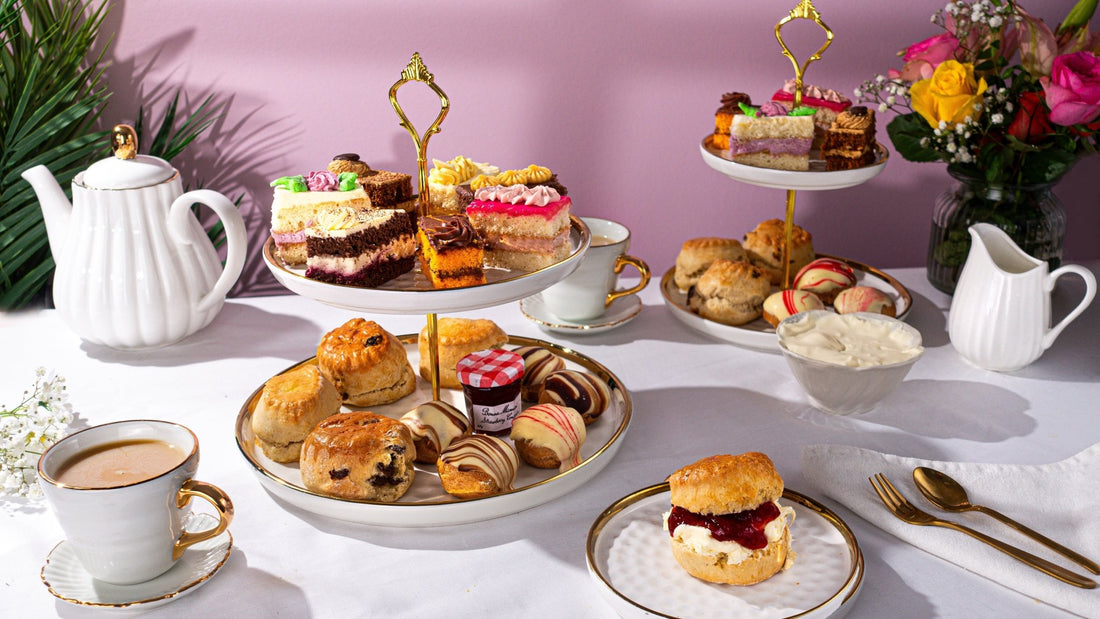While afternoon tea and high tea seem to be interchangeable in name, they are actually two very different traditions. At their core, both consist of a meal accompanied by tea. However, there are some key differences to keep in mind if one is not familiar with the customs of British culture.
What is High Tea?
High tea is a working-class meal eaten around five o'clock onwards, usually consisting of a hearty meal and a pot of tea. In the United Kingdom, high teas are a tradition that dates back to the late 19th century. High tea, was traditionally served 'High', meaning at a high table with high back chairs. It was typically a substantial meal of meat or fish, bread, vegetables, and tea to drink, and it would feed the gentlemen and women who had been at work all day.
Today, we know this as ‘dinner’ or ‘supper’. Some of us still refer to this meal as ‘tea’ but the ‘high’ tradition has faded over the years. And it can also be something more elaborate, especially if it's served in a fancy hotel or restaurant.
What is Afternoon Tea?
Afternoon tea is a British tradition of serving food and beverage. The afternoon tea tradition has come a long way in its more than two centuries of history, but the core idea is simple: dainty sandwiches and pastries served with a pot of hot tea. It started in the Edwardian period when ladies would meet at a hotel in the afternoons for an afternoon of leisure and gossip over a selection of little treats and a spot of tea.
Some new twists have been added over the years — scones stacked high with cream and jam, romanticised with fancy names like finger sandwiches or finger desserts. But no matter how it’s served up, afternoon tea is a delightful meal that’s come to represent British culture.
Afternoon Tea vs. High Tea – What Are The Main Differences?
While both afternoon tea and high tea are served in the afternoon, one key difference between them is the time of day. Afternoon tea is typically served around 4 pm, while high tea tends to be served later in the afternoon (around 5- 7 pm).
Another difference between them is subtle but relevant to understanding each tea culture as a distinction is that afternoon tea originating from the upper class is considered more of a formal gathering than high tea, whose origins originated in the working class.
Another factor that separates afternoon tea and high tea is the food served. Whilst they both include tea as a beverage, afternoon tea includes delicate pastries, little sandwiches, scones and cakes. Whereas high tea is typically a more wholesome meal of meat, potatoes and vegetables served after a long hard day at work.
And finally, another difference is that afternoon tea is also known as ‘low tea’ as it was typically served at a low table. On the contrary, high tea was once served at a high table. Despite many individuals thinking of them as the same, you can see many distinct differences that set them apart.
Modern-Day Tea
Today, both high tea and afternoon tea have the same purpose, to socialise with family and friends. They are enjoyed by everyone, no matter their social class.
Our Range
At Patisserie Valerie we have hand crafted the most delicious afternoon tea for you to order to your door. We have a glorious range of afternoon teas, brownies, cake bites as well as brand new cream tea offerings. Shop the full range here.
 Spend £65 for Free Delivery
Spend £65 for Free Delivery
 Pay Later with Klarna
Pay Later with Klarna


